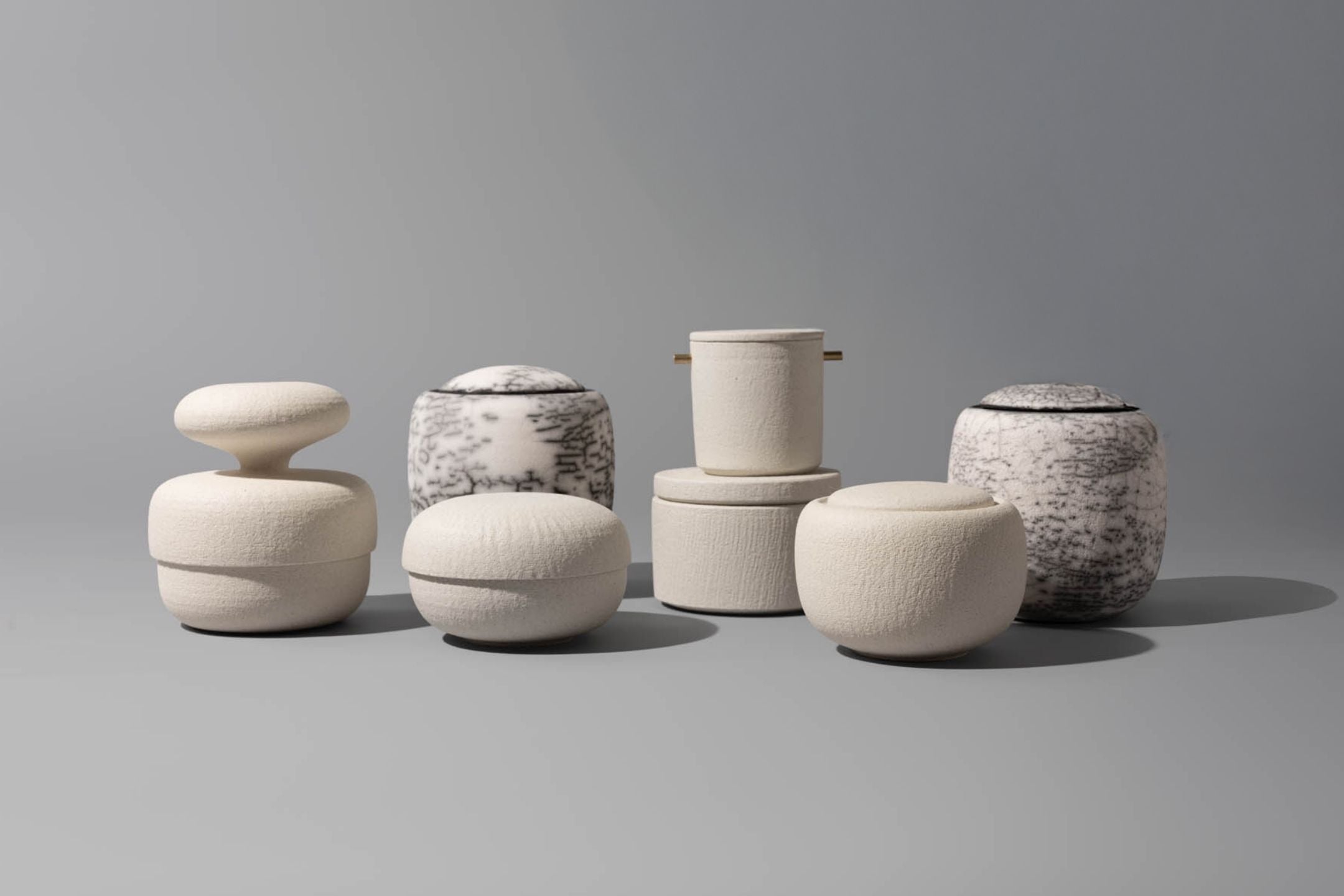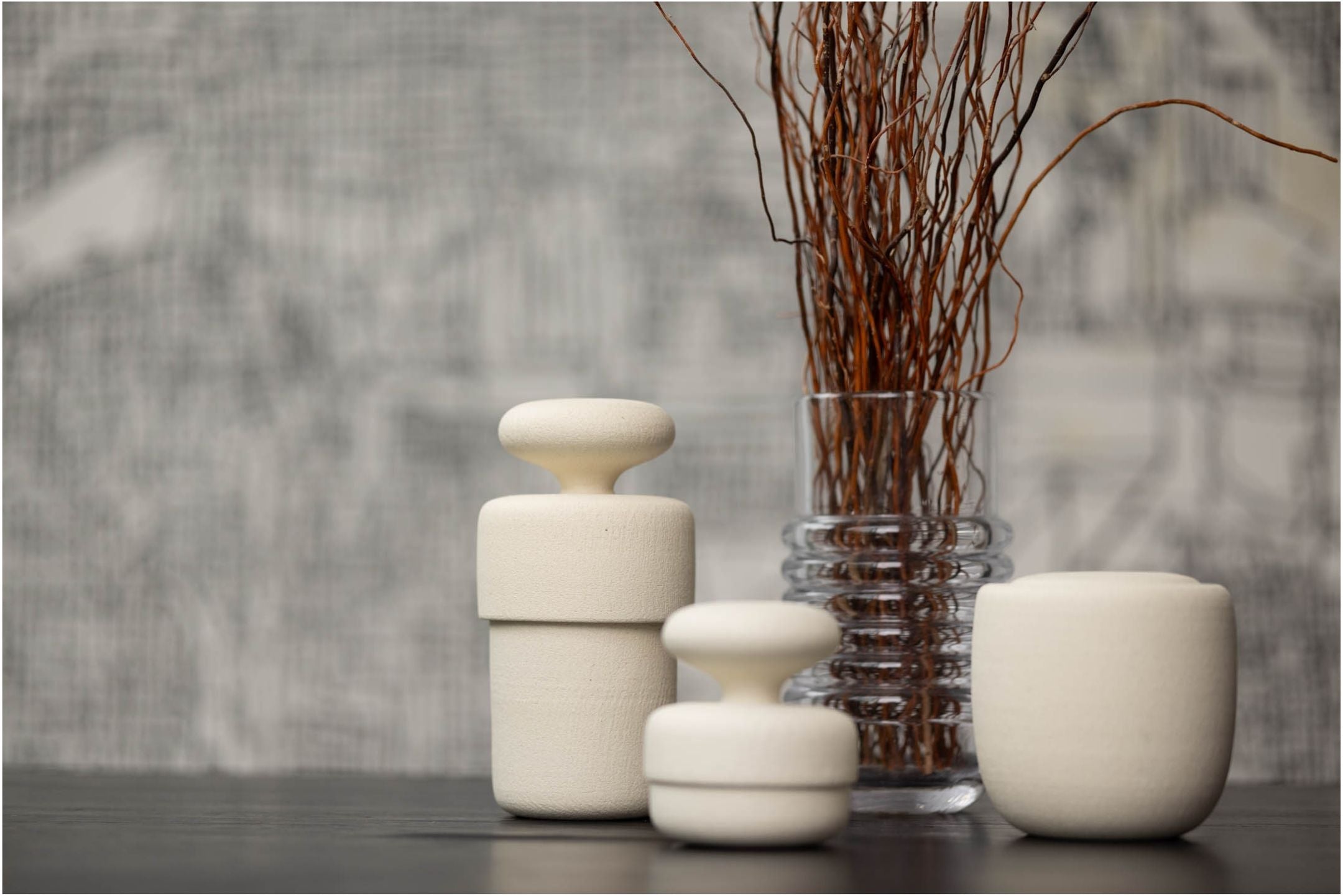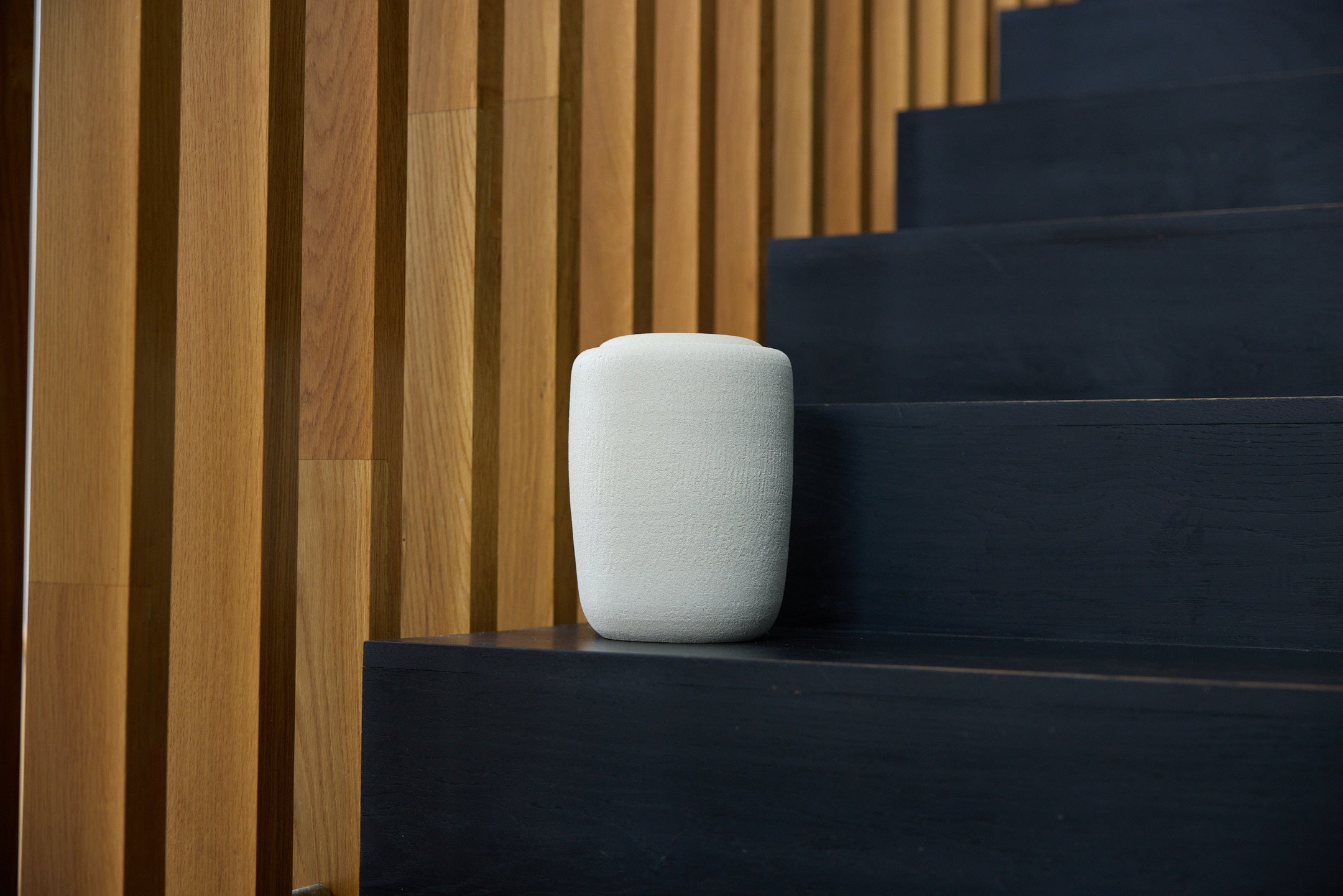How to choose a beautiful cremation urn

Choosing a cremation urn is a deeply personal thing. They come in all sorts of shapes, sizes, colours and materials - from highly glazed ceramic or natural stoneware to wood, marble or metal; from traditional grecian urn styles to simple wooden boxes; from faux Ming dynasty to novelty. The choices are endless.
But the number of people who say they’ve “found Vaso” after searching for years for “the perfect urn” for their husband/mother/son makes me wonder if what’s currently on offer isn’t really what people want.
So what are people looking for in a cremation urn? And how do you choose the right one for you and your loved ones?
What do you use a cremation urn for?
There are generally four reasons someone might need or want a cremation urn:
- To hold their loved ones’ ashes for all eternity
- To hold the ashes until they’re scattered in their loved one’s favourite place
- To bury their loved one’s ashes in
- To share ashes with close family or friends.
An urn for all eternity
If you’re like me, the idea of having your loved one constantly close is both reassuring and comforting. My dear mother, Bar, sits on an open shelf in a hallway outside my office where we can walk past her multiple times a day and can reach out and talk to her as we go about our lives. I love that. And it’s why I wanted Vaso’s urns to be works of art - so they could happily sit on display as sculptural works of art, while adding a soothing sense of calm and remembrance.
Our Vaso urns are hand made from clay by artists and designed to help you celebrate your loved ones in beauty.
A vessel for scattering ashes
The second reason people put ashes in urns is to transport them to the place where they want to scatter them. This might be their loved one’s favourite place or across many different sites of enjoyment or love. The urns can then be taken home and saved as a token of your love.
Burying your loved one’s ashes
Sometimes people want to bury their loved ones’ ashes after they’ve been cremated. In this instance, a ceramic urn or wooden box would be most appropriate because they disintegrate over time releasing the ashes into the soil to help regenerate and give life to everything around them. Burying the ashes in your loved one’s favourite place or a site with a beautiful view overlooking their favourite place can be a wonderful way to honour those special people in your life and you can go and visit just as you would if they were buried in a coffin in a cemetery.
Sharing ashes with family or friends
Lastly, urns are used for sharing ashes amongst family members. These are often called memento urns and are generally smaller, pocket-sized vessels that are easily transported.
Our family did a mix of all of these options - I have a small portion of my mother’s ashes in one of our large Cygnus urns because I love the way it looks and the solidity and presence it brings to our space. My brothers both live in Melbourne and wanted a portion of mum’s ashes close to them so they each have one of our smaller memento urns on their bookcases in their Australian homes as a way of keeping mum’s memory alive for them. And finally we buried some of mum’s ashes in one of our Andromeda urns on a hilltop overlooking the beautiful Akaroa harbour on Banks Peninsula - one of our family’s special places and somewhere my mother spent many happy days throughout her life.
What can cremation urns be made from?
Cremation urns come in a wide range of materials, each carrying its own look, feel, and meaning.
Some are made from metal such as brass, bronze, or stainless steel, chosen for their durability and timeless finish. Others are crafted from wood—like oak, walnut, or cherry—offering warmth and a natural, earthy presence. Ceramic and porcelain urns often appeal for their artistry and delicate beauty, while stone or marble urns convey strength and permanence.
For families who want an environmentally friendly option, there are biodegradable urns made from materials like wool, paper, sand, or salt that gently return to the earth or water.
Choosing the right cremation urn for you
People often choose an urn based on what feels most connected to their loved one’s personality, beliefs, or style—whether that means something elegant and enduring, simple and natural, or designed to one day merge back with nature.
The other consideration is what you’re ultimately going to do with the urn. If, like me, you want to keep it close by as a constant reminder of your loved one, then choosing something that speaks to your loved one’s spirit as well as appealing to your sense of style and taste is key.
For a beautiful range of handmade ceramic urns, visit Vaso and explore our wide variety of styles, sizes and shapes.
With love and kindness
Bridgit



